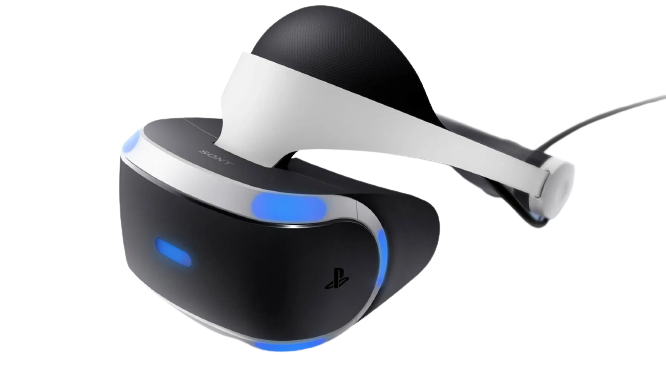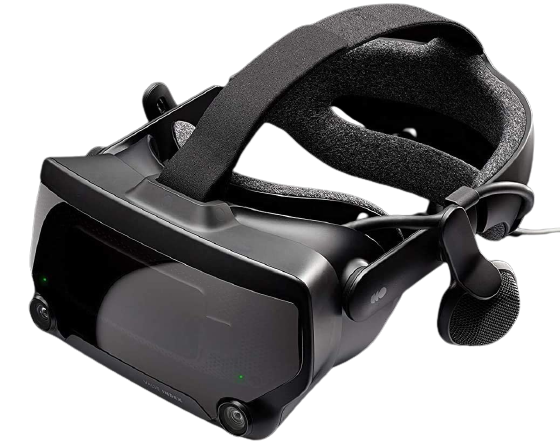Choosing the best VR headset for your needs might seem tricky as there’re a number of VR headsets on the market, each offering something different. There’s options for PCs and phones, as well as standalone options that have everything you need to jump straight in out of the box.
Getting a real VR experience is vastly different to the time you merely slotted your smartphone into a plastic holder, though. The mobile VR headset and phone-based VR headsets such as the Samsung Gear VR or Google Daydream are basically dead. And that’s a good thing. Don’t even let us get started with Google Carboard, which may have set real mass adoption back years. If you’ve ever spoken to someone about VR and they say they’ve already “tried it” and it “wasn’t that good”, you can bet your last Dollar they used Google Carboard.
A large chunk of current iPhone, Android and VR app options don’t even work with the old mobile VR goggles anymore. If smartphone-based VR does ever make any significant return, its more likely going to be in the form of headsets that plug into phones via USB-C for VR content.

So while those phone-based VR headsets were an interesting entry point into VR, the experience from a dedicated headset is on another level. With advanced tracking systems, 4k screens and 6DoF (six degrees of freedom), your body movements are accurately translated into the virtual world, letting you feel like you’re truly there.
VR games are getting better every year. Valves stunning Half-Life: Alyx had set the benchmark and others such as Star Wars: Squadrons have helped give VR some acclaim amongst gamers. Quality VR headsets can be seriously demanding though. The best can come with high resolution screen which packs so many pixels at such a high refresh rate that you’d need a beast of a gaming PC to run them properly. You can find out if your current PC meets the required specification here.
Regardless, if you’re a avid PC gamer, a solid PC-connected VR headset offers the most versatile library of software for an truly immersive VR experience. Its important to remember that a more powerful VR system will still be largely tethered to a desktop or laptop and a PC VR headset may also require some additional external sensors, so they may not be the best option for everyone.
Modern VR headsets fit under one of two categories: tethered or standalone. A tethered headset such as the HTC Vive Cosmos or Valve Index will be physically connected to your PCs via a cable, and the PSVR to a PlayStation console. The cable can make them a bit cumbersome though at time and can reduce the feeling of true immersion. You’ll also likely have to use either external sensors to provide full 6DOF (six degrees of freedom) movement tracking.
A standalone headset will work straight out of the box. Standalone offers the greatest physical freedom by completely removing the need for cables as it doesn’t require any external device to handle the processing. But with freedom, comes compromise. Standalone systems aren’t yet at the same level as those tethered to a powerful PC, but that doesn’t mean they aren’t good enough, and they’re cheaper.
The Oculus Quest 2 has become the closest thing to a home VR console that’s ever been available, but it requires a Facebook account to work. Released in 2020, the Quest 2 has become one of the best selling VR headsets in the world, with good reason. Its well priced at $299/$399, depending on storage, and it offers a fantastic experience without the need for any additional expensive hardware. As a standalone system you can turn it on as soon as you get it and enter the virtual world. The set-up is easy for even the most tech-shy user.
Speaking about console gaming, the aging PlayStation PSVR (a 2016 release) is still a lot of fun and, provided you already own either a PS4 or PS5 console, its still a solid buy. There’s plenty of games in its vast library to work your way through and Sony have even announced a second generation PSVR which will be due out some time next year.
Just know that VR is still evolving. Augmented reality (AR) headsets and mixed-reality (MR) headsets aren’t yet ready for everyday home use, so a solid VR headset is your best bet for escaping to other worlds. The best VR headset for you will depend on how you plan to use it.
Oculus Quest 2
The best VR headset for standalone

The good:
- Wireless
- Easy to use
- Good price
- High refresh rate
- Doubles as PC VR headset
- Wireless PC link
- Roomscale VR
The bad:
- Requires Facebook account
- Controllers aren’t rechargeable
- Front-heavy
- No storage expansion
At $300 with nothing else required, the Oculus Quest 2 delivers virtual reality wirelessly, with a great selection of games and an delivers an immersive VR experience anywhere you want. This standalone VR headset has self-contained motion tracking and full-motion six degrees of freedom (6DoF). It has a surprisingly great high-resolution display and also comes with built-in speakers. Apps can be downloaded straight to the standalone headset’s onboard storage – but it isn’t expandable so bear this in mind when choosing which one to buy.
It can also be used as a PC VR headset either via a Link Cable, or even wirelessly through Oculus Link, provided your connection is good enough to run things smoothly. This means not only can you play stored games, but you also have access to the full library on offer for PC.
The only downsides to consider are the fact that it does require a mandatory Facebook account for access and some extra accessories may be needed to get the most out of it. The Standard strap is OK, but the Elite Strap is definitely worth considering. Better yet, get one with an extra battery, which will also help balance out the weight of this front heavy device. The Quest 2 has a battery life of about 2-3 hours, depending on use, and a battery pack could ramp this up to 8.
Specification
- Price: $299/£299 64GB | $399/£399 256GB
- Released: 2020
- Display: LCD
- Resolution: 3664 x 1920 (1832 x 1920 per-eye)
- Refresh Rate: Up to 120Hz
- Field of View: 100 degrees
- Tracking: 6DoF
- Weight: 503g (1.1lbs)
- Battery life: 2-3 hours
- Controllers: Oculus Touch
- Connections: USB Type-C, 3.5mm headphone
PlayStation VR (PSVR)
The best VR headset for console

The good:
- Affordable
- Great selection of games
- Comfortable
The bad:
- Also requires PS4 or PS5 console
- New generation due out 2022
- No accessories included
- Poor resolution
Sony’s 2016 PSVR headset doesn’t have much competition in the console war. Actually, it doesn’t have any yet. It is still the only head-mounted VR display for gaming consoles but it still offers a surprisingly immersive experience. Sony’s already confirmed it’s working on a next-gen PSVR headset for the PS5, complete with a new set of controllers that is set for release sometime in 2022. If you can find one of these on sale it is definitely worth buying, otherwise you may want to wait to see what the upgraded version has to offer. If you do go ahead and grab one, Sony continues to deliver many excellent virtual reality games, and even has some great exclusives.
All you need to start gaming in VR is the PSVR headset and either a PS4 or PS5 console. Many PlayStation VR games will work with the DualShock 4 controllers, so you don’t even need motion controls. But if you’re wanting to get the most out of this system, consider getting them and the Aim Controller too.
Specification
- Price: $299/£299
- Released: 2016
- Display: OLED
- Resolution: 1920 x 1080 (960 x 1080 per eye)
- Refresh Rate: Up to 120Hz
- Field of View: 100 degrees
- Tracking: 6DoF
- Weight: 544g (1.3lbs)
- Controllers: Motion
- Connections: USB, HDMI
Valve Index
The best VR headset for PC

The good:
- Good display
- Great build quality
- Impressive audio quality
- Best field of view
The bad:
- Expensive
- Requires powerful PC
- Tethered
- Heavy
If you’re looking to experience VR at its best from home then you should get a HMD that tethers to a gaming PC. Its a trade off from wireless to get the best visuals possible. The Index headset has excellent audio provided by its built-in speakers and a really sharp display with an impressive 130 degree field of view, which beats that of its rivals. There’s also mechanical IPD control. The biggest downside of this quality headset is that it can be rather heavy to wear for any extended period of time.
Valve’s Index headset uses new base stations which support a larger play area, as well as a new set of controllers that support full finger tracking. Valve’s “knuckle” controllers are pressure-sensitive and can track all five fingers, making them almost like gloves. However not many apps are really making the most out of them just yet.
The Index’s external “lighthouse” boxes, mean you will need a big enough room to set these up. It’s not as self-contained as some of its rivals such as the Oculus’ Rift S, which can track the room with cameras built into the headset, or the HTC Vive Cosmos. It’s also not wireless. But if you already have some of Valve’s hardware, that’s also mix-and-match compatible with the HTC Vive, which also is built on the Steam VR platform.
Specification:
- Price: $999/£919
- Released: 2019
- Display: LCD
- Resolution: 2880 x 1600 (1440 x 1600 per eye)
- Refresh Rate: Up to 144Hz
- Field of View: 130 degrees
- Tracking: 6DoF
- Weight: 809g (1.78lbs)
- Controllers: Valve Index
- Connections: USB, Display Port
